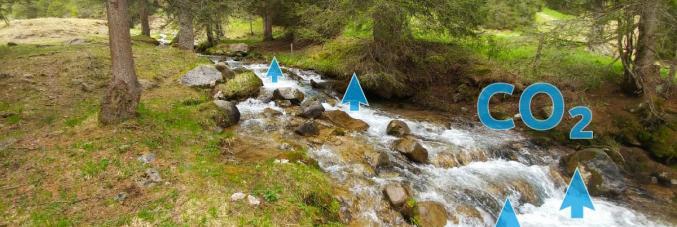
Mountain streams release large quantities of greenhouse gases into the atmosphere
18.01.2023
On a regional and global scale, a significant amount of carbon dioxide (about 12 billion quintals of carbon per year, corresponding to over 10% of the total) is released into the atmosphere by streams as small watercourses furrow through mountain regions, flowing downstream towards larger bodies of water. Often supersaturated with CO2, mountain streams have a significant exchange capacity with the atmosphere due to the high turbulence of the water current.
A study published in Nature Communications by researchers at the University of Padua has shown that the existing estimates of the quantities of carbon dioxide released by terrestrial freshwater into the atmosphere could be largely underestimated, noting that they have not considered the emissions localized in correspondence with the bottom steps present in the mountain streams. Specifically, the team analyzed the rich mountain streams in Switzerland because it was subject to previous studies, and therefore easy to compare.
Coordinated by Prof Gianluca Botter at the Department of Civil, Environmental, and Architectural Engineering (ICEA) the study entitled Steps dominate gas evasion from a mountain headwater stream is part of the European DyNET: Dynamical River Networks Project.
The regional application of this discovery shows that when recalculating the amount of carbon dioxide emitted into the atmosphere by rivers, the gas emissions escaping through all the rivers in Switzerland’s mountain water could increase by 3.5 to 9.6 kgC/m2/year, almost three times as much as current estimates.
The result also challenges existing global estimates of CO2 emissions from freshwater bodies and lays new foundations for studying the delicate balance of greenhouse gases in the atmosphere and our planet’s complex carbon cycle.



